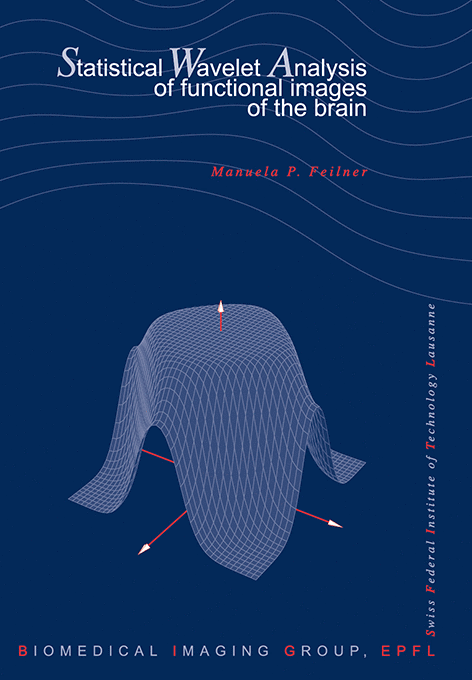Statistical Wavelet Analysis of Functional Images of the Brain
M.P. Feilner
École polytechnique fédérale de Lausanne, EPFL Thesis no. 2671 (2002), 208 p., November 20, 2002.
Functional magnetic resonance imaging (fMRI) is a recent, non-invasive technique that allows the measurement of brain metabolism while a subject is performing specific motor or cognitive tasks. The practical difficulty is that the signal changes are very small and the noise is relatively high. To enhance the activation signal, conventional methods, such as SPM, apply a Gaussian filter to the data and perform a statistical analysis at the pixel level. Gaussian filtering obviously suppresses high-frequency information. To avoid this loss of resolution, we propose instead to apply a wavelet transform and to perform the statistical analysis in the wavelet domain. Our statistical analysis relies on a conservative decision strategy which ensures that the false detection rate is kept well under control.
In the first chapter, we introduce the fMRI technique and compare it with other modalities. We then characterize the noise of fMRI data and introduce the statistical tools for our analysis. Next, we describe different types of wavelet transforms and show how those can be applied to the analysis of fMRI data.
Different wavelet bases offer different compromises. To determine the wavelet properties that are the most beneficial for the detection of activation patterns in fMRI data, we develop a test procedure for the objective evaluation of analysis methods. This procedure allows us to compare various brands of wavelet transforms, including Daubechies wavelets (real and complex) and the newly defined fractional splines. We observe that one of the transforms—dual fractional spline of degree 1.2—usually outperforms the others. We establish an interesting theoretical connection between this particular wavelet transform and the Gaussian filter recommended by SPM.
Traditional, separable wavelets are constrained to dyadic scale progressions (powers of two). To allow for finer scale progressions, we define new 2D and 3D fractional wavelets which use quincunx sampling. We propose an FFT-based implementation that turns out to be surprisingly fast. We also present some experimental examples where these quincunx wavelets offer some benefits.

@PHDTHESIS(http://bigwww.epfl.ch/publications/feilner0201.html,
AUTHOR="Feilner, M.P.",
TITLE="Statistical Wavelet Analysis of Functional Images of the
Brain",
SCHOOL="{\'{E}}cole polytechnique f{\'{e}}d{\'{e}}rale de {L}ausanne
({EPFL})",
YEAR="2002",
type="{EPFL} Thesis no.\ 2671 (2002), 208 p.",
address="",
month="November 20,",
note="")